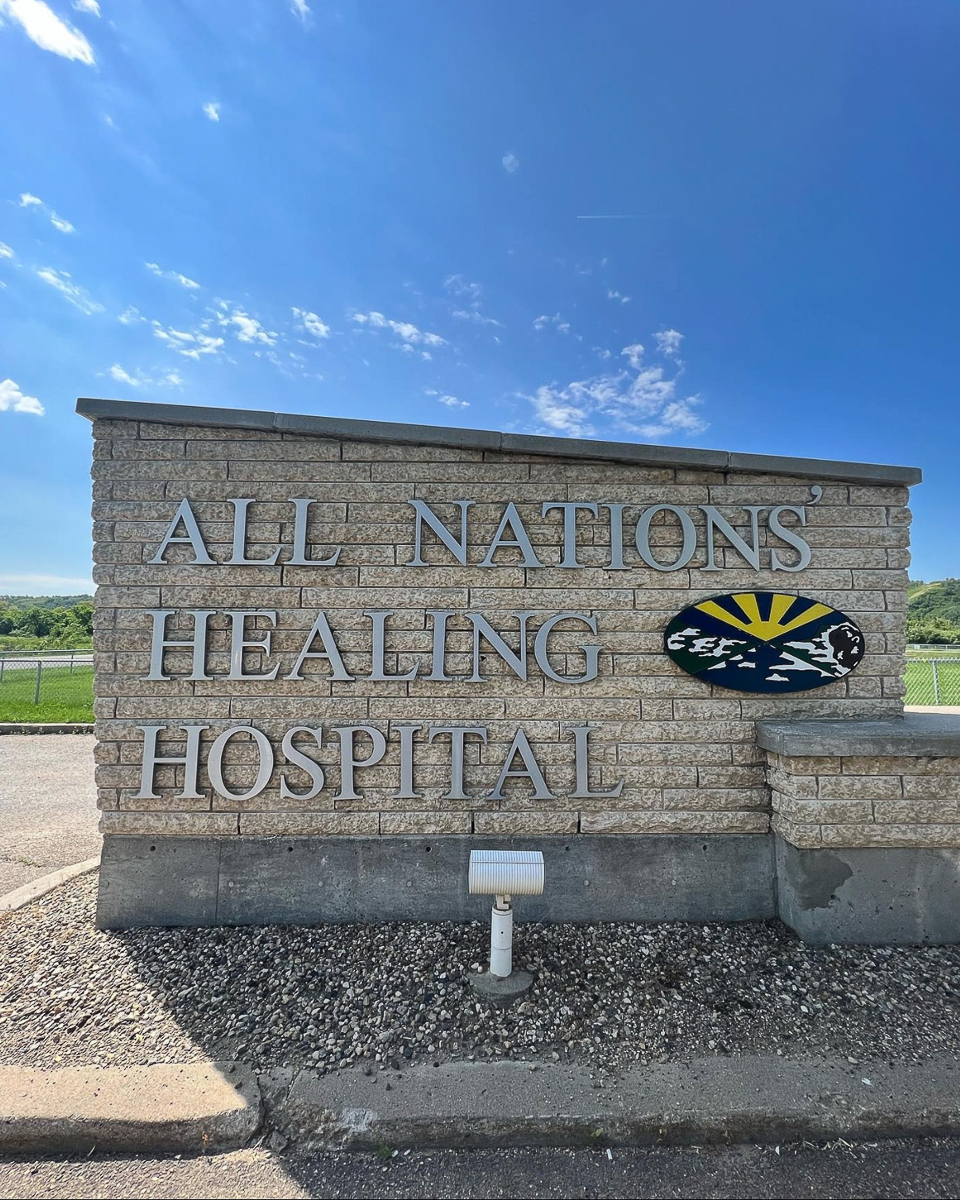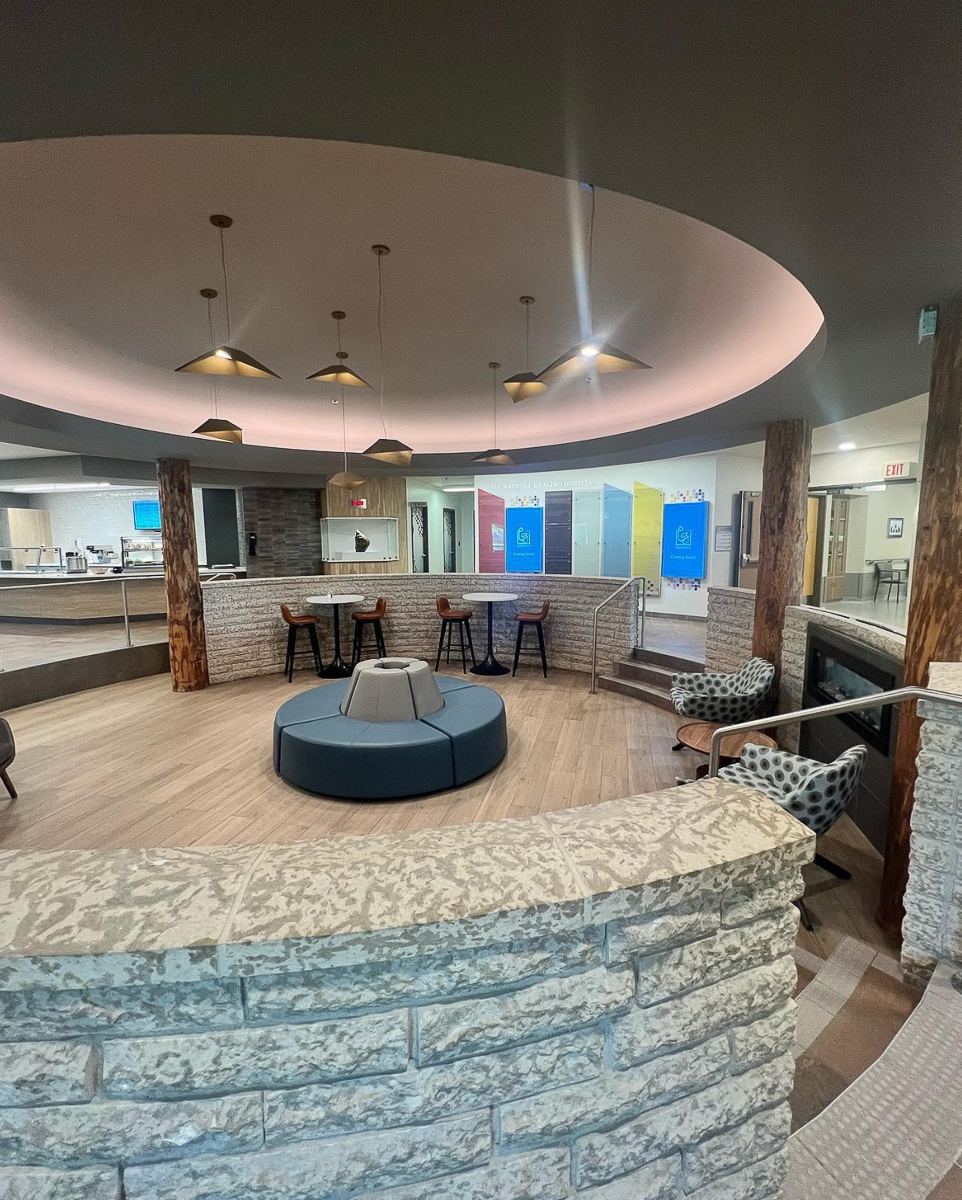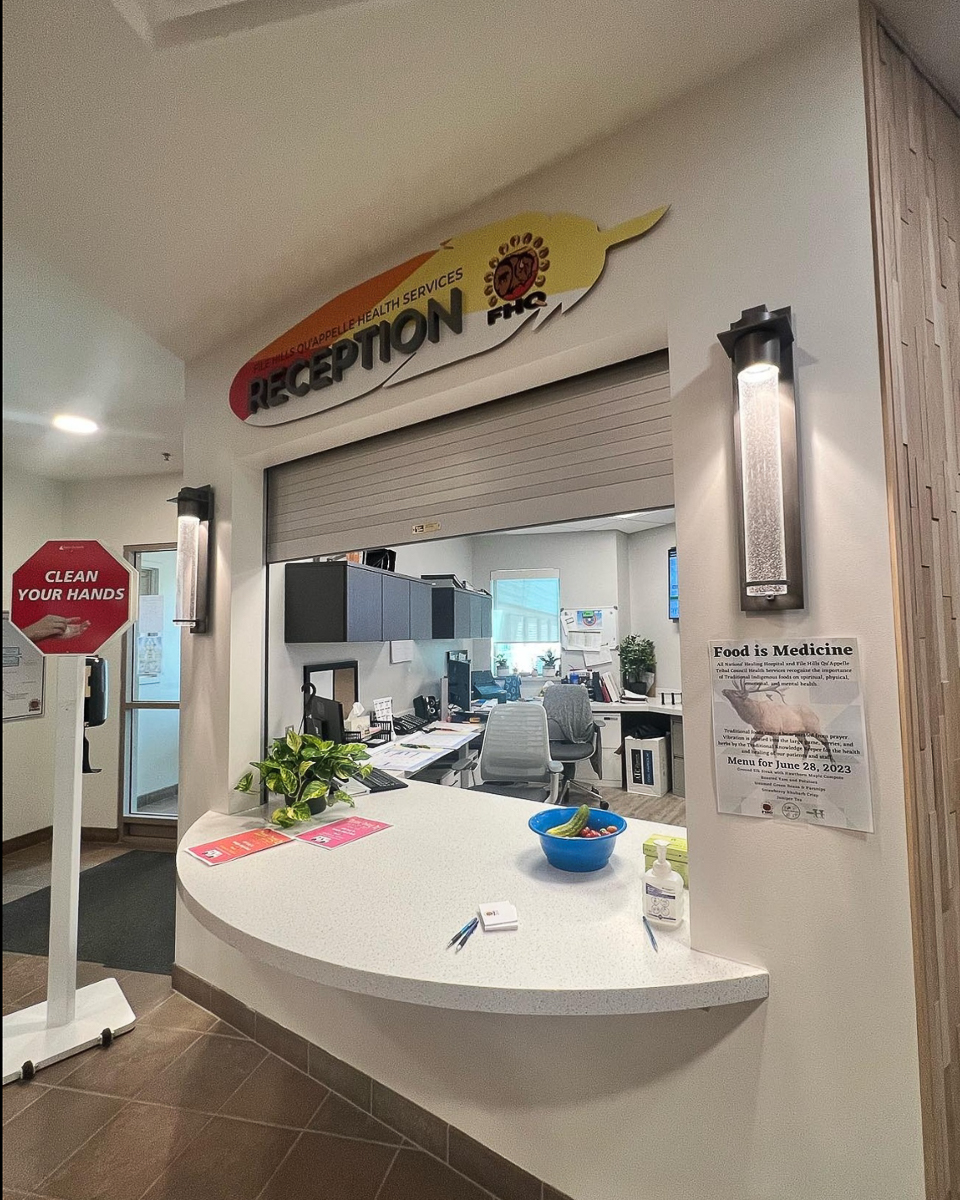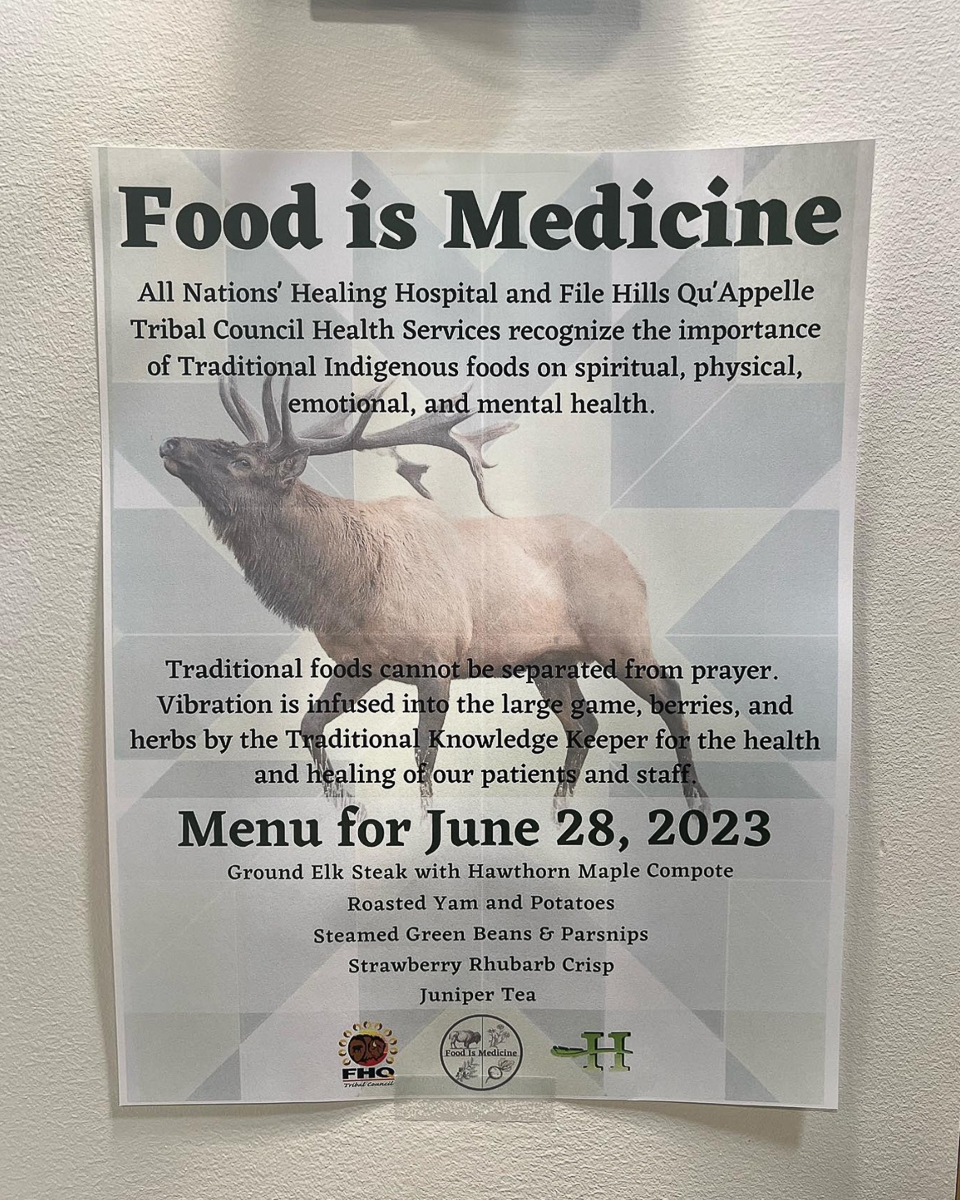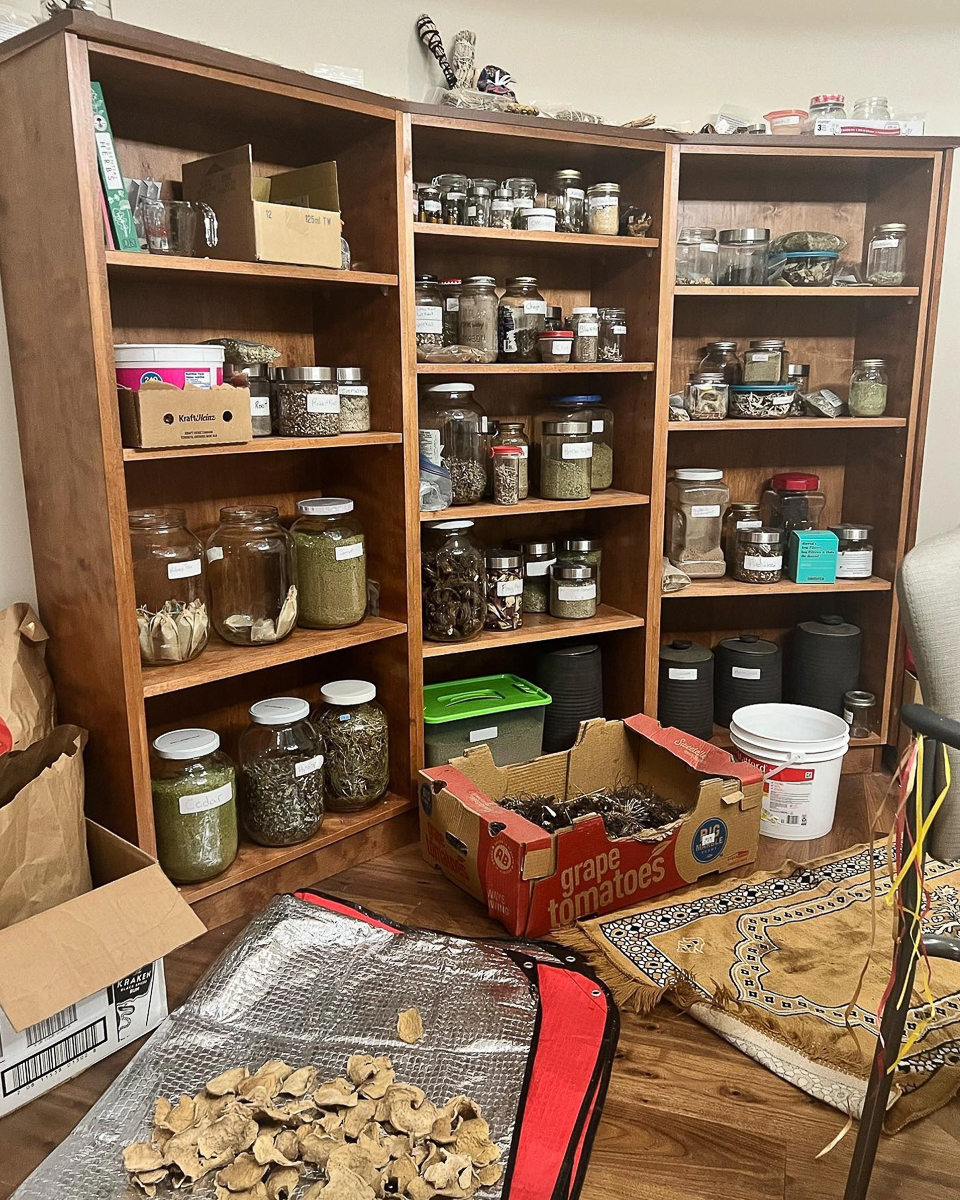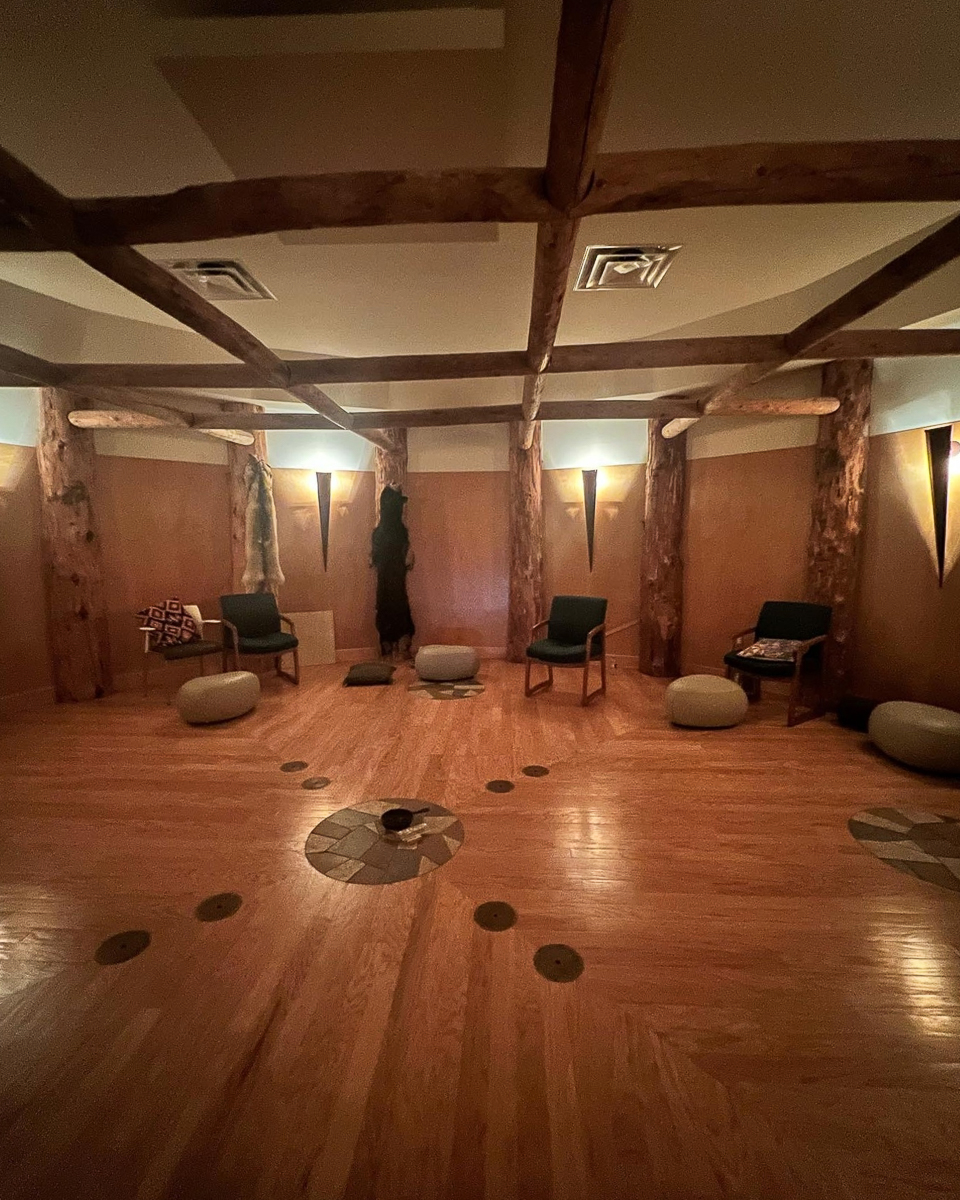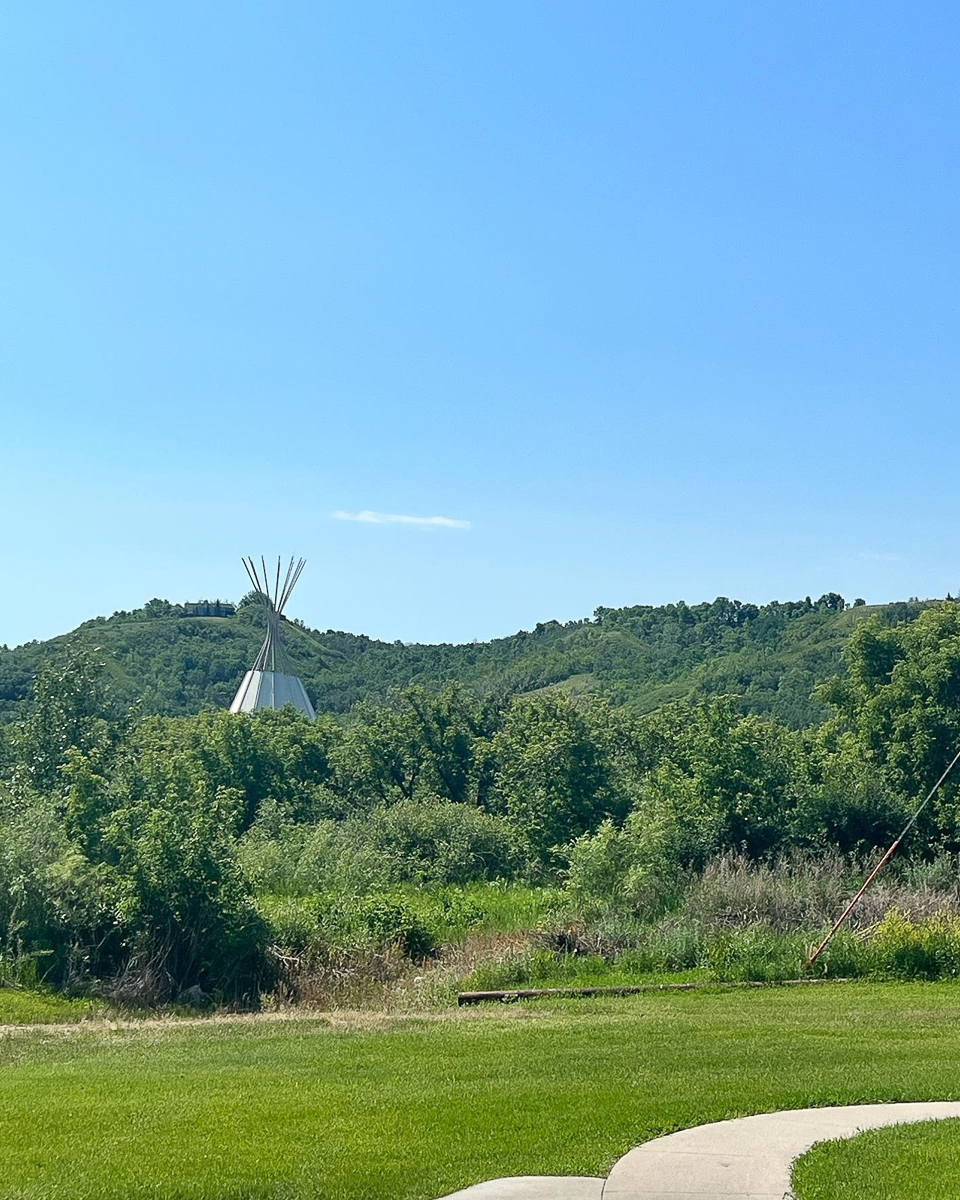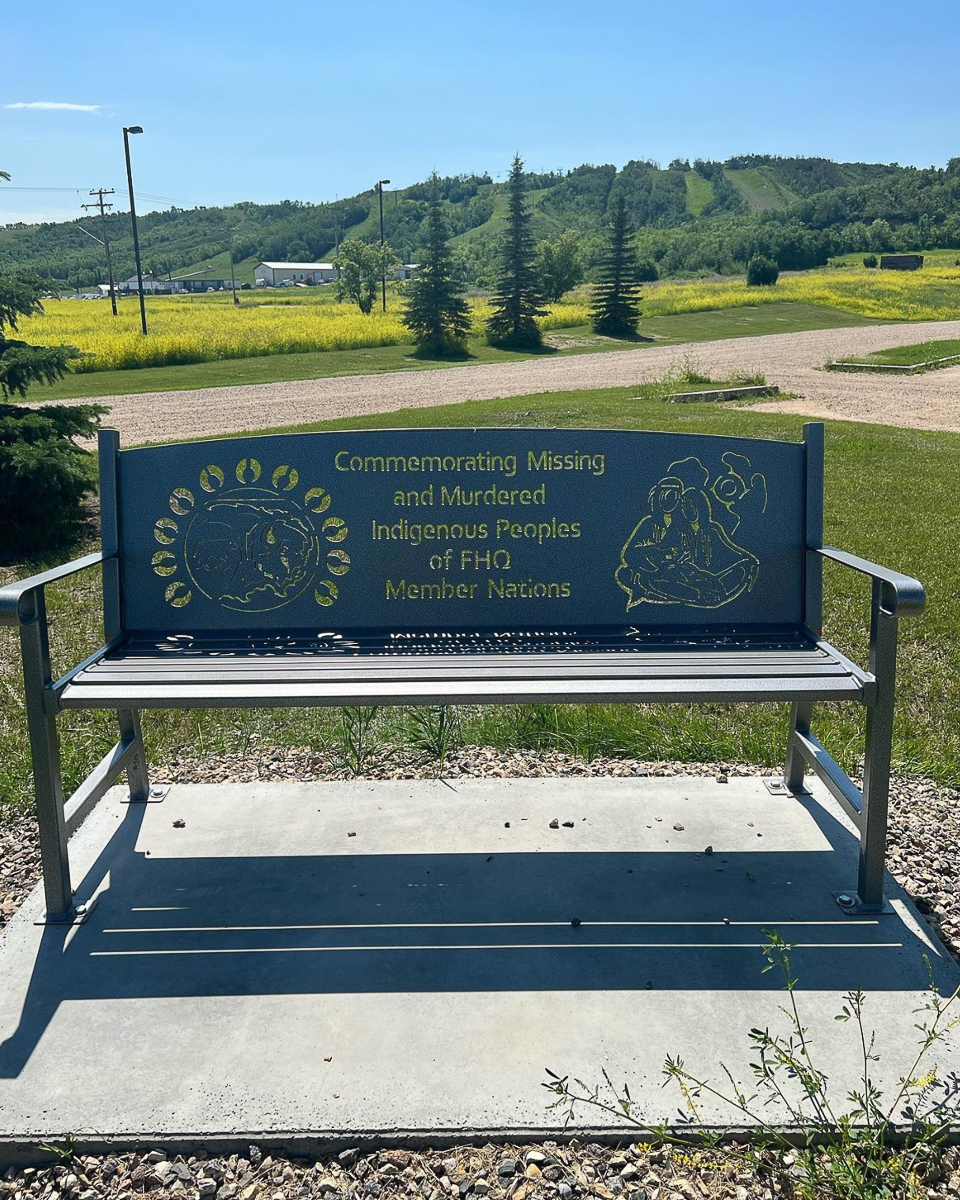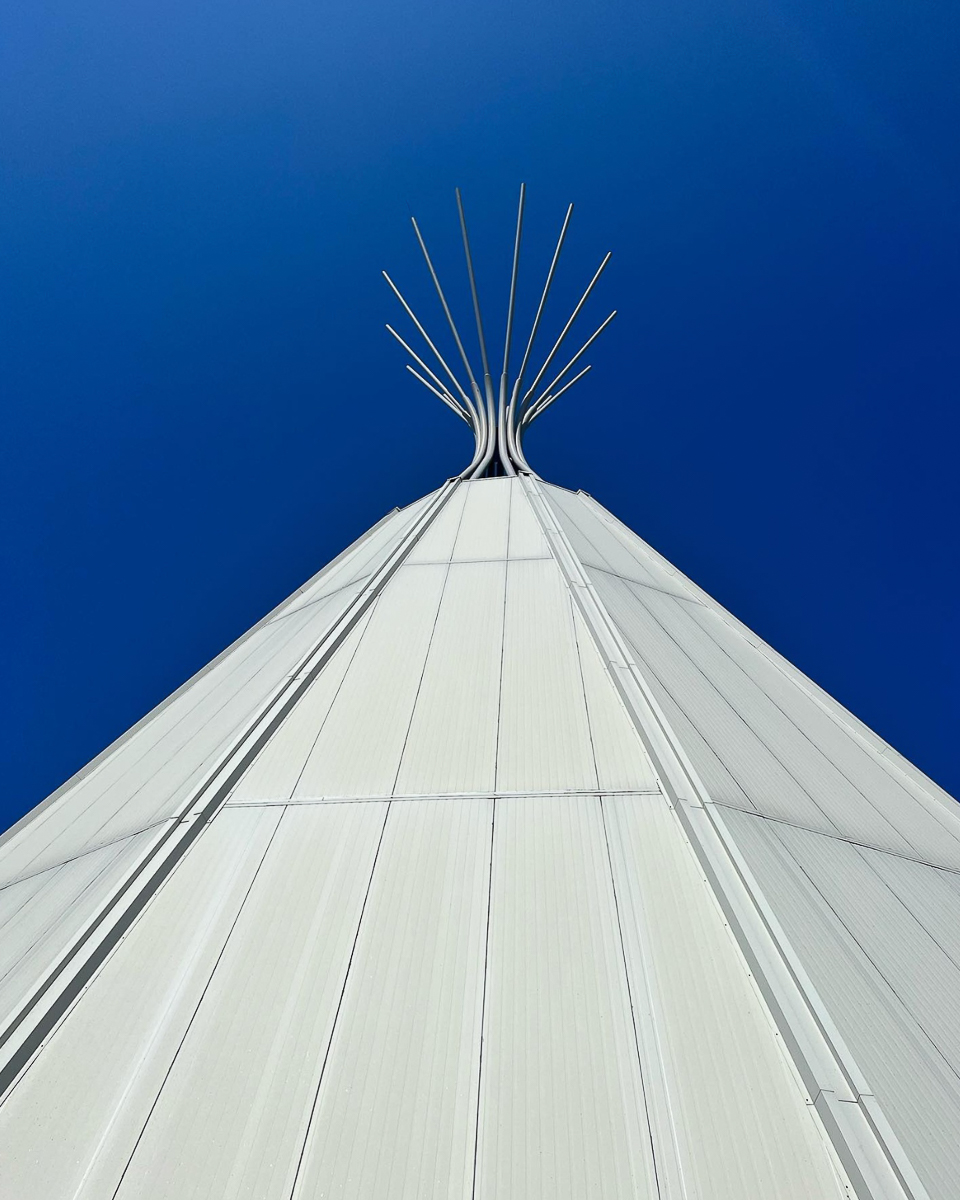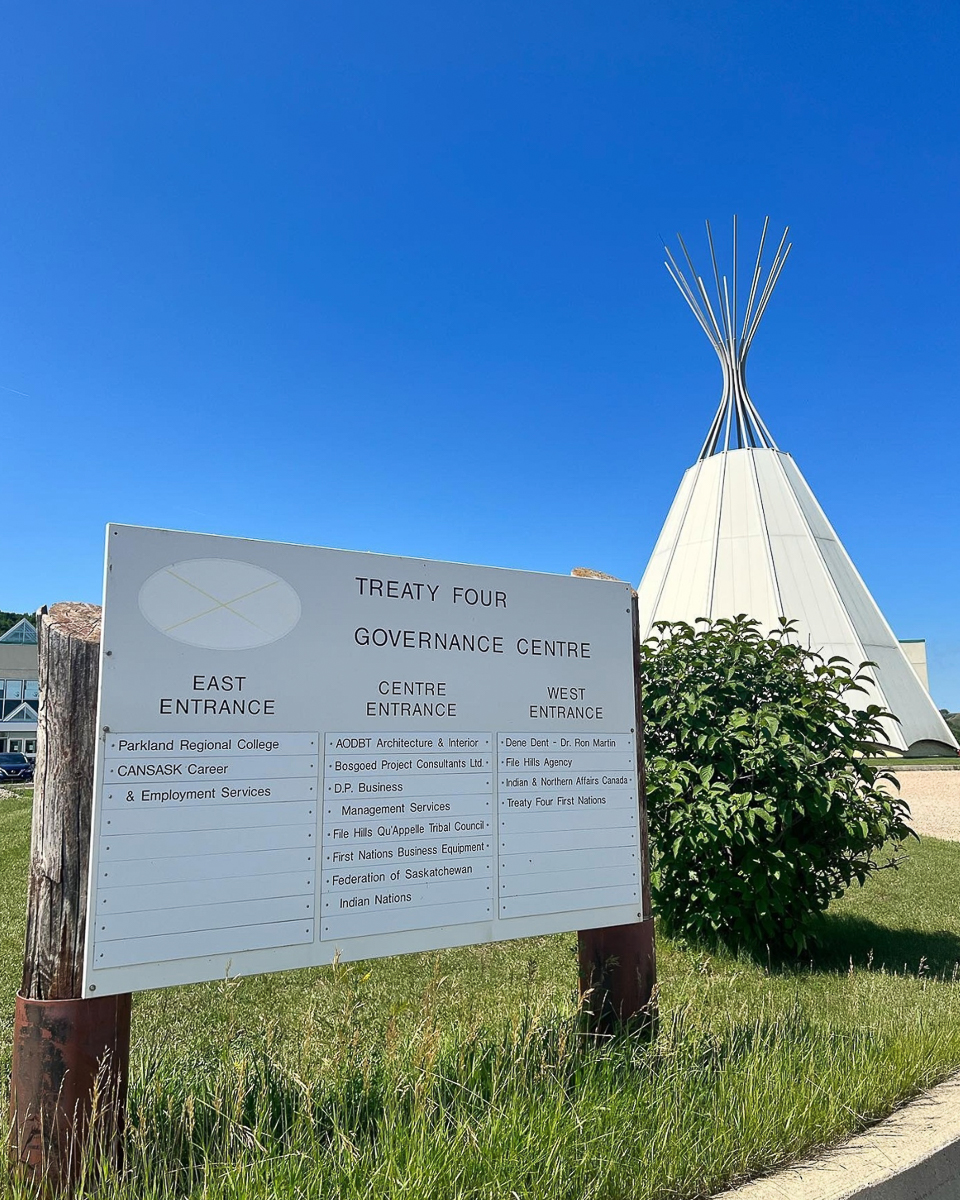All Nations Healing Hospital Collaboration
By Jessica Ross, Nughejagh Founder
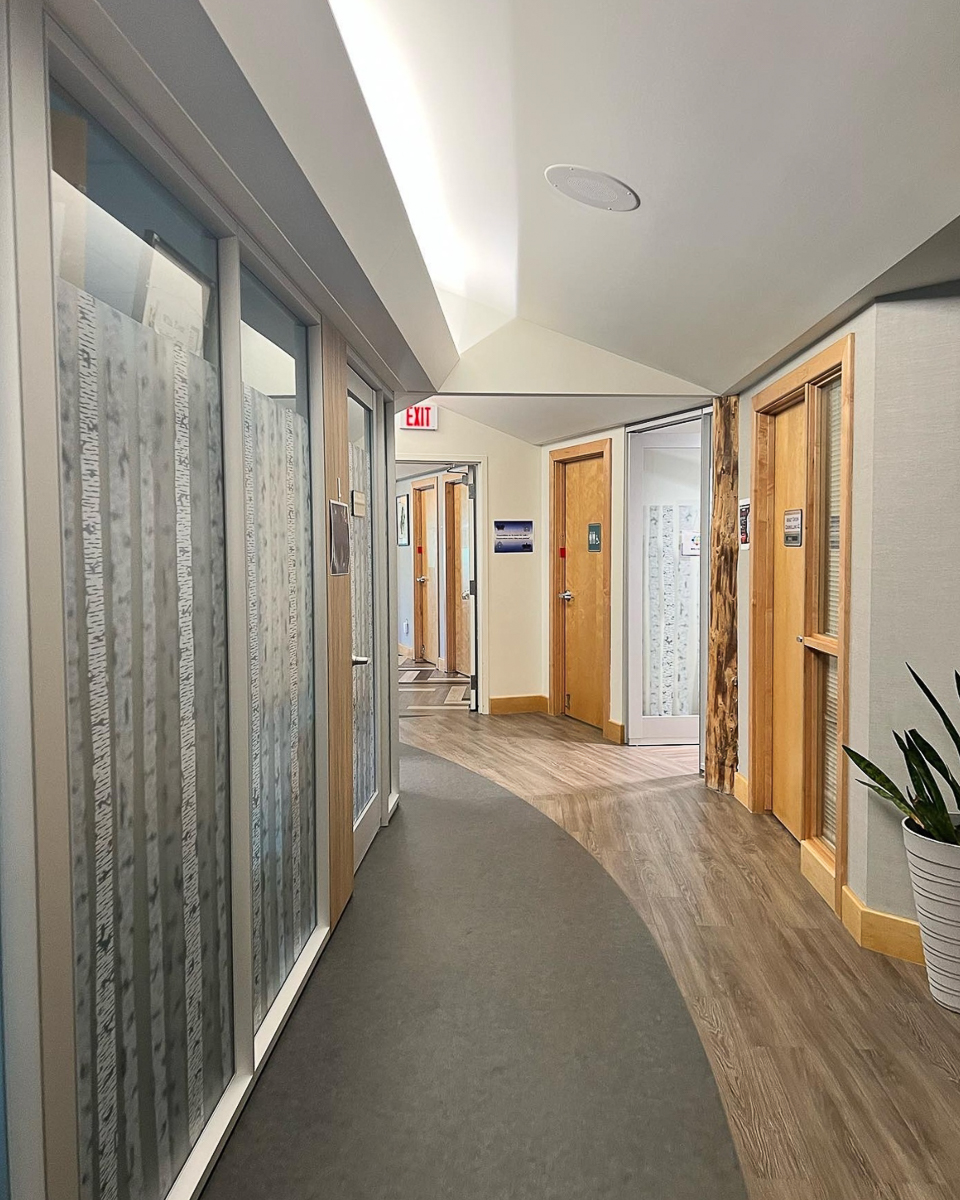 Visiting the All Nation's Healing Hospital in Fort Qu'Appelle Saskatchewan Canada
was likely the most significant experience of my trip. It is difficult to say this
as so many moments and experiences of this trip were thought-provoking, heartbreaking,
and inspiring. The All Nation's Healing Hospital (ANHH) visit, however, provided me
with a template of what the Eklutna Community Clinic could aspire to become.
Visiting the All Nation's Healing Hospital in Fort Qu'Appelle Saskatchewan Canada
was likely the most significant experience of my trip. It is difficult to say this
as so many moments and experiences of this trip were thought-provoking, heartbreaking,
and inspiring. The All Nation's Healing Hospital (ANHH) visit, however, provided me
with a template of what the Eklutna Community Clinic could aspire to become.
Similarly to the Eklutna Clinic, the ANHH is owned and operated by a tribe- the FHQ. FHQ stands for "File Hills Qu'Apelle". They represent and provide services to 11 different tribes with the Treaty Four territory. The ANHH was one of many projects that the FHQ leads.
Professor Lovo suggested I visit the hospital, and although my knee-jerk reaction would have been "but it wasn't part of my original plan", I gave into "letting things go" and went.
The drive was a little more interesting than that of the drive to Saskatoon, as there were a few more variations to the flat landscape. The hospital was approximately 54 minutes away from Regina. I packed with me some gifts to offer whoever would take a moment to share some knowledge with me and exhaled as I exited the Jeep Cherokee I rented.
The exterior of the building did not exude the symbolism that is found within. The building (from the front entrance perspective) is somewhat plain, with an emergency exit on my right, and a long, narrow pathway leading to the main entrance.
I honestly envisioned the Eklutna Community Clinic as I crossed the threshold into a mud room before entering the real building. A mudroom that perhaps acts as a gateway from one worldview into another, a chance to cleanse yourself before entering the deeper, more spiritual space that is where healing begins. Upon entering I notice right away the gathering space. A circular-shaped space with tables and chairs around the edges and chairs that immolate a fire pit at the center. The stone, the wood, the plants, the glass tile trickling through the floor - all symbolizing the elements.
I met Chaylah, an administrative assistant for the manager of the hospital. I tried to ease into my inquiries, remembering to introduce myself in the Dene fashion. WHO am I is more important than WHAT I am doing there. I introduce myself stating my name, my family and tribal affiliation, and lastly my work. Chaylah was at first taken aback, as I believe she thought I was a patient at first. She asked me to take a look around the gathering space and said should be with me in a few moments.
Chaylah then walked me around the entire facility. First, she took me to the Women's Health Clinic, where OBGYN examinations can be conducted as well as labor and delivery services by way of trained midwives. Chaylah was excited to show me the one labor and delivery room that ANHH houses, and explained that women who do not have any reason to "Evacuate" to a federal hospital can have their babies here, surrounded by family.
I didn't quite understand the significance of this room until later on in my time in Canada when Dr. Sasakamoose explained to me that there was a policy in Canada that all Indigenous Women had to be evacuated to federal hospitals to have their babies (regardless if they were at risk or not, or if they wanted to or not). The federal policy would only pay for the pregnant woman to travel, often resulting in her traveling alone, having to undergo treatment and delivery of her child surrounded by strangers, and not having anyone there to advocate for her or her child.
After learning about this the images of this room take on a whole new meaning. No wonder Chaylah was excited to share it with me. For this room symbolizes so much more than a labor and delivery space. It represents the ability for autonomy and the end of a policy that no doubt caused trauma for countless women and their children.
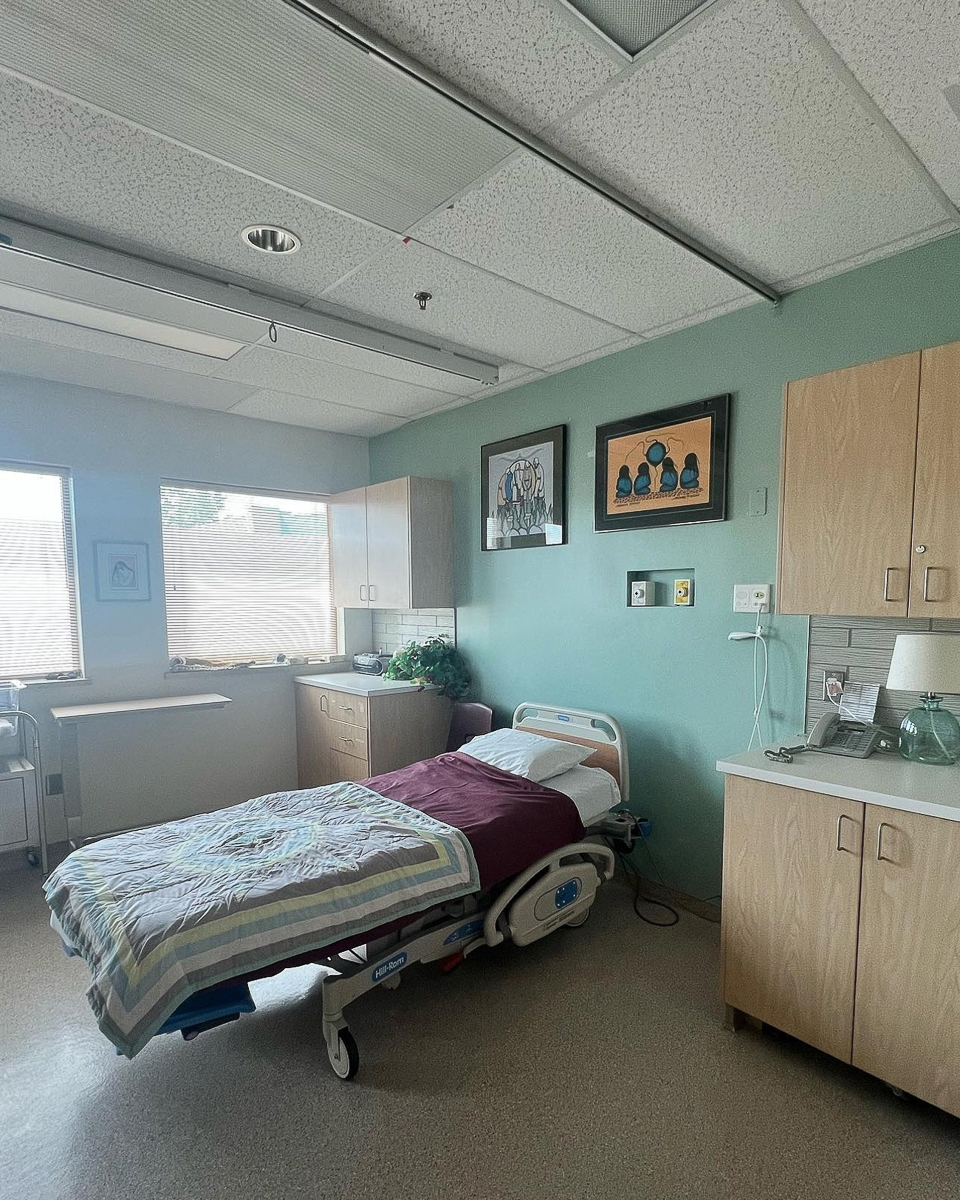 After the Women's Health Centre, Chaylah walked me through the clinic and we entered
what is called the Pasikow Muskwa Rising Bear Healing Centre. The Centre serves tribes
as a dialysis center, which I felt was amazing (for the tribes to be able to get access
to a life-saving procedure locally is no doubt amazing), but I think what struck me
as significant about this clinic was its use of traditional medicine.
After the Women's Health Centre, Chaylah walked me through the clinic and we entered
what is called the Pasikow Muskwa Rising Bear Healing Centre. The Centre serves tribes
as a dialysis center, which I felt was amazing (for the tribes to be able to get access
to a life-saving procedure locally is no doubt amazing), but I think what struck me
as significant about this clinic was its use of traditional medicine.
Along with Western/Modern medicine, the clinic houses a spiritual healing room where patients can meet with a traditional healer during their appointments. It is here where a traditional healing can perform ceremonies on/with the patient, as well as prepare and serve the patient traditional medicines to aid in the healing process.
Patients have the ability to have exclusively Western /Modern medicine, exclusively traditional medicine, or a combination of both. I stood in the spiritual room and took in a big inhale as I could not help but feel a wave of emotions rush over me.
My people have been denied this type of medicine for so long, and have even been taught that this medicine was evil. I explained this to Chaylah and she responded that her people were also hesitant at first to partake in traditional practices, but quickly embraced it as the effects on all aspects of health were recognized almost immediately. Traditional medicines are prepared right there in the room.
My heart leaped as I saw all of the medicinal plants being dried out and space to engage in spiritual healing. Tears filled my eyes as I contemplated the traditional knowledge and practices that were deemed illegal for my ancestors to practice. Growing up I was told that to practice these ceremonies was evil, yet I had always been drawn to them. How can something so healing be evil? Perhaps these cultural practices are what our people need to heal.
Chaylah guided me through more corridors and down a few more curved hallways until we came to a door labeled "ceremony room". Inside the space, you are met with warm, musky scents from recent smudging. The space is dimly lit, and rich in wood, stone, earth, and fire elements. The floor of the room is adorned with wood planks arranged to point toward the center of the circle, where ceremonial stones have been placed. The room feels incredibly inviting. I felt as though I could have stayed there for much longer, but my guide had other work to do, so our tour charged on.
Just across the hall from the ceremonial space was a door leading to the outside of the clinic where there was a paved walkway that led to a traditional sweat lodge. The sweat lodge ceremony is significant to tribes as it is considered a sacred purification ceremony. In some cultures, it is said the sweat lodge represents "the womb of Mother Earth", and provides a safe space to "ask for healing, forgiveness, hope, vision, to give thanks, or anything else participants need during their journey of change in their lives" (nativeconnections.org, 2023).
I was deeply moved by the efforts of ANHH. The FHQ appears to be able to identify the needs of its people beyond the physical form. The facility embodied what I envision for my tribe, a place that provides support, and a safe space to be Indigenous. To exercise the spiritual practices of our ancestors that have been denied of us for so long.
My people are in pain, pain from trauma that has not been resolved by Western Medicine. Western Medicine has failed because it has not acknowledged the reasons why the pain is present. The trauma that has occurred at the hands of colonizers is now causing symptoms. The NIHB conference proudly proclaimed that culture is healing, and I am starting to believe that it indeed is. The ANHH is evidence of such a proclamation.
Treaty Four Governance Centre
The Treaty Four Centre was just south of the ANHH, and since you could see the impressive tipi structure from the hospital, I knew I had to take a few moments to visit the site and take in the centre's purpose.
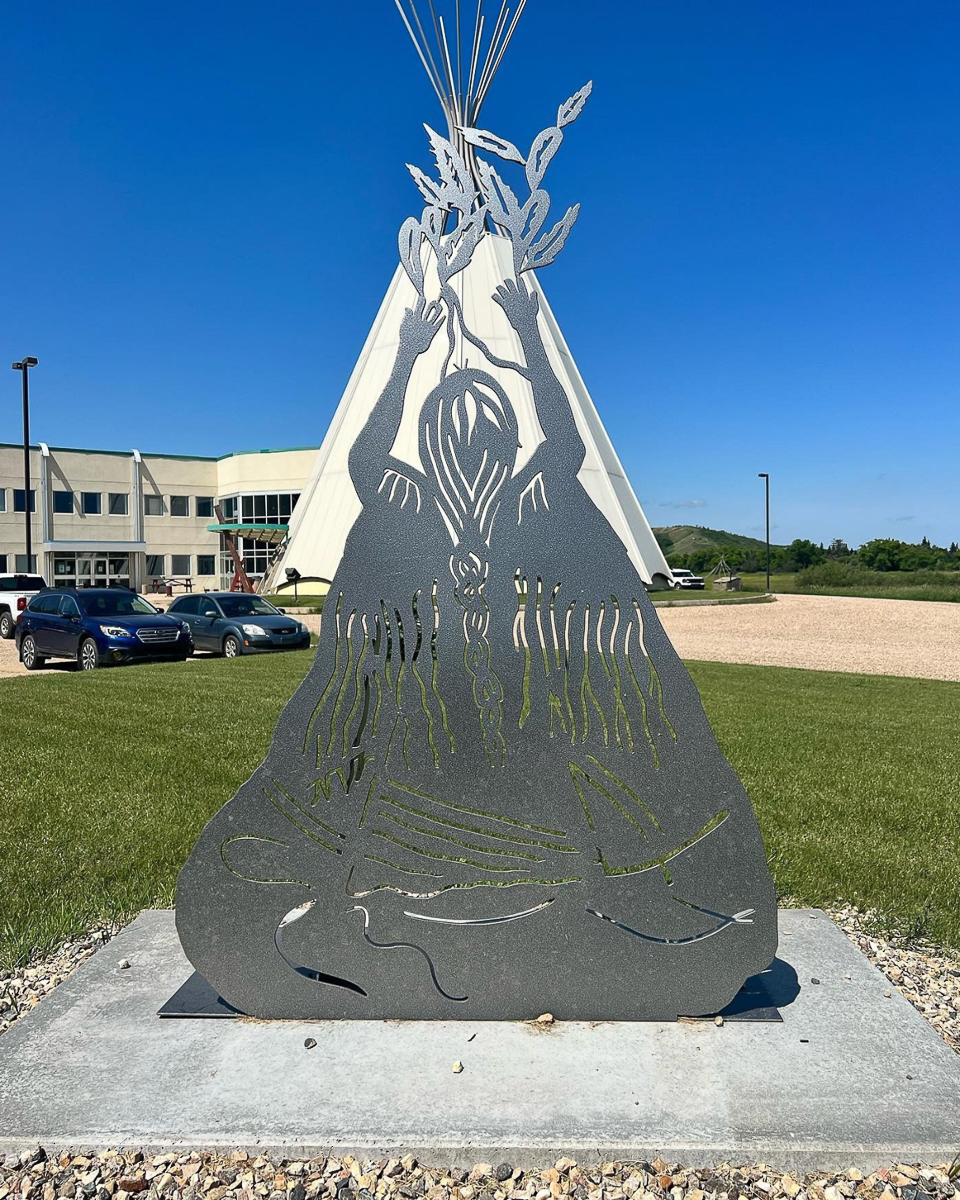 The Treaty Four Governance Centre is "next door" to the All Nation's Healing Hospital.
It houses the Tribal Council offices, college classrooms, dental clinics, and other
business offices. The large tipi in front of the Governance Centre serves as a gathering and ceremonial
space for the local tribes. Artwork is on display in front of the Centre to commemorate the importance of ceremony.
A memorial bench is also outside of the Centre in memory of the Missing and Murdered
FHQ tribal members.
The Treaty Four Governance Centre is "next door" to the All Nation's Healing Hospital.
It houses the Tribal Council offices, college classrooms, dental clinics, and other
business offices. The large tipi in front of the Governance Centre serves as a gathering and ceremonial
space for the local tribes. Artwork is on display in front of the Centre to commemorate the importance of ceremony.
A memorial bench is also outside of the Centre in memory of the Missing and Murdered
FHQ tribal members.
While sitting in the grass, taking in nature around me I heard a voice call out in a Canuck accent "What ya taking a picture of?" I turned around to find an older Indigenous man with tan skin and short, white balding hair. The man introduced himself as Vincent. He had just had his teeth cleaned at the centre and was waiting for his wife to pick him up.
I admittedly was taken aback by Vincent's kindness. Perhaps because I was so enthralled by the silence I heard while sitting in the grass plain. But my hesitancy quickly subsided as Vincent continued to speak. I reminded myself I was being blessed by the presence and storytelling of an elder. I initially struggled with my dental background during my visit with Vincent. Once he had told me he had just had his teeth cleaned my clinical eyes were initiated and I started making mental notes of recession, possible decay, and misalignment. I internally told my dental clinician side to "hush" and began to make an effort to take in other aspects of Vincent to appreciate. I noticed his eyes, which depicted genuine kindness, especially when he smiled as he spoke, and of course, his hands that were clearly the hands of a man who has spent his whole life working hard with the land.
Vincent was incredibly friendly and open to discussion. He was curious about my presence and interested in my reason for visiting the area. I told Vincent how I had just toured the ANHH and how impressed I was by the traditional medicines offered there. Vincent shared with me how he liked how women were able to give birth there, and said "Ya know, women have been having babies in their homes since the beginning of time...I figure they should be able to continue to if they so choose."
Vincent shared with me how his wife and he met later in life and were blessed in their forties with several children whom they raised to tend the farmland that Vincent was raised caring for. He shared with me the story of how he came to embrace organic farming after his father was diagnosed with cancer which Vincent attributed to the countless chemicals his father used for pesticides and fertilizer. "After he got sick we decided that was it, no more chemicals. It is a lot more work, but it is worth it to us" Vincent explained as he rubbed his large, dark calloused hands with remnants of dirt under his nails.
Vincent told me how his daughter-in-law had recently encouraged him to stop "talking to strangers" because she feared he would be looked at like a creep. He giggled as he told me this as he probably realized here he was, talking to a stranger yet again in an age where people have grown accustomed to digital communication, where if you call someone on the phone they automatically think something is wrong. Shortly after finishing this story, a small white car pulls up and the window rolls down. Vincent's wife yells out the window "Vincent, are you talking to strangers again?!" I couldn't help but giggle. Vincent has a habit of being friendly.
I felt incredibly blessed to have this encounter. Vincent; an elder who comes from a worldview that in the community people talk to each other. He sees the value in nutritious, organic foods, and keeping families together during life-altering events like giving birth to new life. Vincent saw me, embracing nature, and knew I would appreciate his storytelling. I am grateful.










